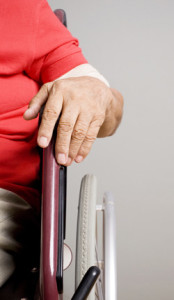CDC and CMS recognize the need to assess infection prevention efforts spanning hospitals and nursing homes.
 As the role of nursing homes grows, so too does the need for infection prevention in post-acute healthcare. Over 3 million Americans receive care in U.S. nursing homes each year, according to the Centers for Medicare & Medicaid Services (CMS). The agency estimates that:
As the role of nursing homes grows, so too does the need for infection prevention in post-acute healthcare. Over 3 million Americans receive care in U.S. nursing homes each year, according to the Centers for Medicare & Medicaid Services (CMS). The agency estimates that:
- Between 1 to 3 million serious infections occur every year in these facilities.
- Common infections include urinary tract, diarrheal diseases, antibiotic-resistant staphylococcal infections and other multi-drug-resistant organisms.
- Infections are a major cause of hospitalization and death; as many as 380,000 people die from infections in nursing homes each year.
These facts – and the recent U.S. experience with Ebola – have highlighted the importance of infection prevention programs in protecting both healthcare personnel and patients, notes CMS. “Translating lessons learned from the Ebola outbreak, including the importance of core infection prevention practices, to every setting where individuals receive healthcare is a significant opportunity to increase the safety of U.S. healthcare facilities,” it states. With funding from the Centers for Disease Control and Prevention (CDC), CMS has begun a three-year pilot project to meet identified joint priorities related to assessing the continuum of infection prevention efforts between hospitals and nursing homes, in order to prevent transmission of infections in both settings.
Pilot surveys to assess LTC compliance
CMS plans to use a national contractor to perform educational pilot surveys designed to assess the continuum of infection prevention efforts spanning hospitals and nursing homes. While no citations will be issued, if an immediate Jeopardy deficiency is noted, a referral to the CMS Regional Office will be made, according to the agency.
“The surveys will provide nursing homes and hospitals with guidance on improving infection prevention within their catchment area,” CMS states. “Starting in fiscal year 2016, a pilot nursing home surveyor infection control worksheet (ICWS) and pilot survey process, in collaboration with CDC, will better assess compliance with long-term-care facility infection control requirements that CMS published in 2015 in a Notice of Proposed Rule-Making. To the extent that such requirements are published in final form, we believe that these educational surveys will help the nursing homes become more prepared and help CMS and the CDC develop training materials for both nursing homes and surveyors.” In 2017, CMS anticipates the educational surveys will be conducted in both hospitals and nursing homes.
Once the survey findings have been determined, a team of infection prevention professionals will use that to develop an action plan for improvement, as well as organize on-site technical assistance. When necessary, there will be follow-up visits for technical assistance, and the long-term impact may be measured using CDC’s National Healthcare Safety Network data, says CMS, adding that its long-term goal is “improved surveyor infection control tools and survey processes to optimize infection control.”
CMS expects to communicate regularly with the CDC and state survey agencies throughout the three-year pilot. At press time, CMS had yet to identify the facilities selected to participate in the program.
Editor’s note: For more information visit http://www.apic.org/Resource_/TinyMceFileManager/Advocacy-PDFs/SC16-05_Infection_Control_Pilot_for_NH_12-23-15.pdf.